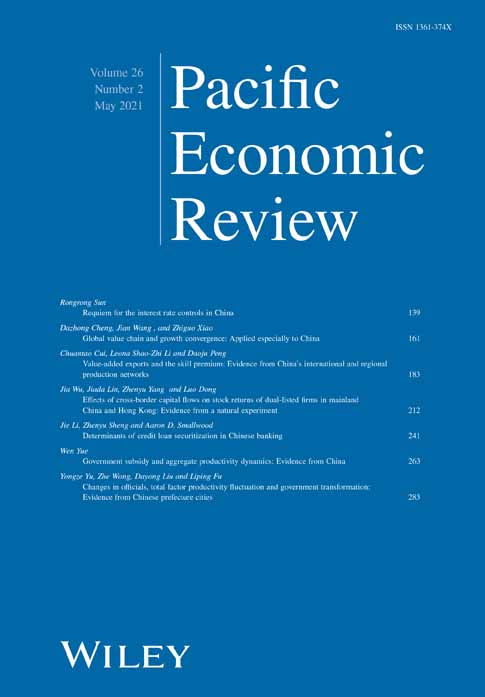Global value chain and growth convergence: Applied especially to China
We thank the editor and a referee for their insightful comments. We also appreciate the comments made by discussants and participants at the City University Hong Kong, Fudan University, and the Conference on Globalization, Development, and Economic and Financial Stability held at the Asian Development Bank Institute. The authors acknowledge research support from the National Natural Science Foundation of China (grant numbers 11571081, 71473040, and 7166113705).
Funding information: National Science of Foundation of China, Grant/Award Number: Grant 11571081, 71473040 and 7166113705
Abstract
We propose a new convergence potential indicator for standard growth convergence regressions: the global value chain (GVC) position index, measured by the contribution of high-skilled labour in total domestic value added. Our convergence indicator can avoid the lagged dependent variable problem discussed in Barro (2015 and 2016) and deliver more accurate forecasts for China’s GDP growth than GDP per capita does. Using the GVC position index, we predict that China’s growth potential remains at 7–8% between 2010 and 2015, while the predictions using GDP per capita as the convergence potential indicator are much lower.




